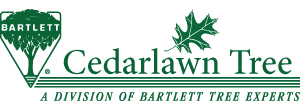Storm Related Tree Damage
Storm Related Tree Damage – Part 2
In this second installment of a three-series blog, we will examine what can make trees susceptible to uprooting or windthrow damage during storms. Uprooting is a term used to describe when trees fall with most of their larger structural roots still attached to the tree. The soil beneath the tree is uplifted and disturbed in the process. In Part 1 of this blog we examined why trees may fail at points above ground with emphasis on insect or disease damage or structural characteristics that makes trees susceptible to above-ground damage during storms. Where and how trees fail is determined by the weakest link in their anatomical support system. If a tree is “sound” anatomically above ground storm damage may still occur if conditions below ground present a weak link in the support system.
In examining a potential of a tree to uproot you need to examine the exposure to wind, the growing environment in which the tree is growing and the health of the root system. Trees growing alone without protection from neighboring trees, taller trees (especially with a dense leaf canopy that increases wind resistance), tree locations subject to wind forces that are not abated by geographical or man-made structures (or even increased due to wind tunnel-like influences related to building locations in cities) are some factors that can increase the likelihood of uprooting. While trees in these locations are not necessarily destined for uprooting problems the possibility increases dramatically when combined with a restricted or diseased root system.
The amount of rain received and the water saturation of soils are factors that can present conditions for uprooting even if a tree is healthy both above and below ground. Wetter areas with higher water tables limit rooting depth and increase the potential for uprooting. In both cases the ability of soils to resist uprooting is decreased. Trees growing bounded by structures limiting the root spread (parking lots, streets, etc.) or limiting the depth of the root system (unfractured rock “ledge”) affect their resistance to wind forces. The type and depth of topsoil in which the trees are growing also influences root depth and resistance to uprooting with finer texture soils providing more support than sandy or gravelly soils. Tree roots may have been damaged or severed during construction-related activites thereby affecting the structural support of trees. Fungal root-rotting organisms can degrade a root system and seriously reduce the support structure of a tree. The presence of root decay often goes unnoticed by homeowners. Examination of trees by arborists can help spot these types of defects and will be the subject of Part 3 of this blog.





